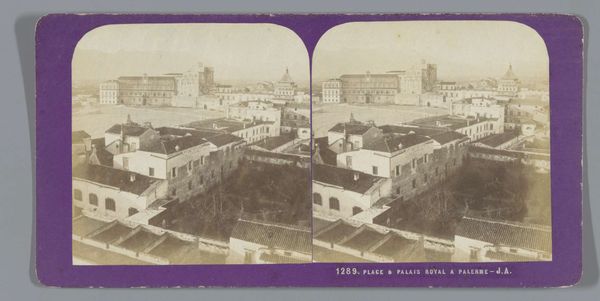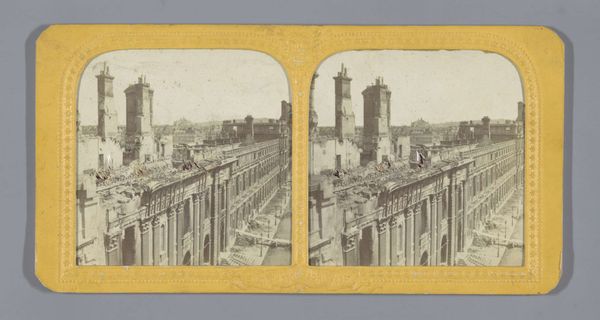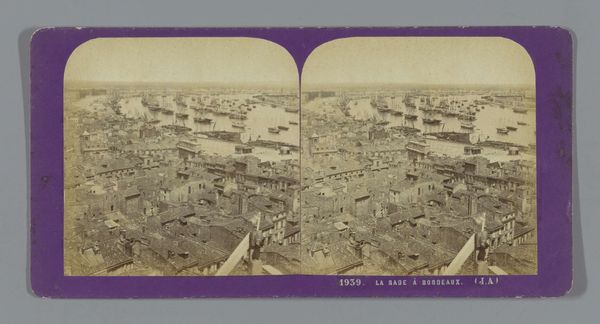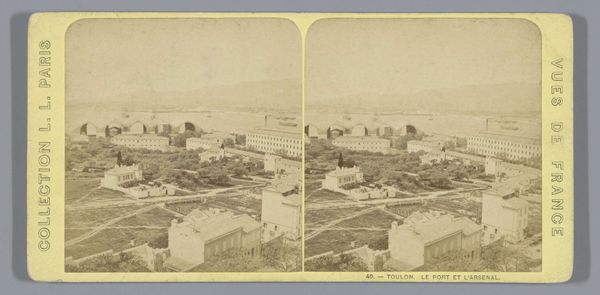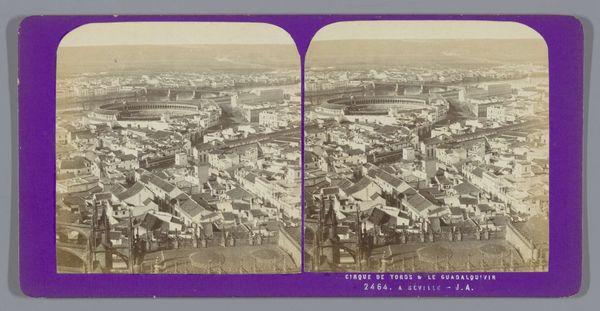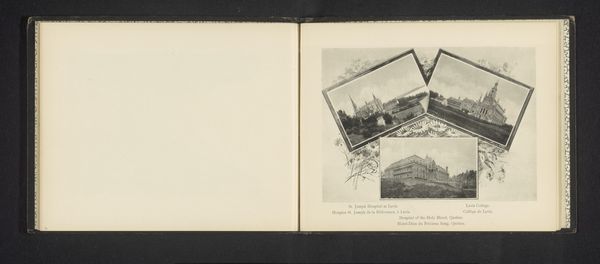
photography, albumen-print
#
16_19th-century
#
landscape
#
photography
#
cityscape
#
italian-renaissance
#
albumen-print
#
realism
Dimensions: height 88 mm, width 176 mm
Copyright: Rijks Museum: Open Domain
Curator: Jean Andrieu captured this impressive albumen print between 1872 and 1876. Entitled “Gezicht op het Vaticaan, gezien vanaf de Sint-Pietersbasiliek”, it translates to “View of the Vatican, Seen from St. Peter's Basilica.” Editor: My first impression is one of detached grandeur. There's something both imposing and serene about viewing this seat of power from such a height. The composition really emphasizes the Vatican's physical dominance. Curator: Absolutely. Andrieu's choice of perspective reinforces the Vatican’s influence within Rome, doesn’t it? Consider how, even with burgeoning urban development around it, the religious architecture seems to organize the visual landscape. That long, unwavering geometry… it suggests permanence. Editor: It makes me think about the development of photography as a medium during this era, how this particular view might have circulated as a symbol of papal authority. The photo's wide distribution would reinforce, both spiritually and politically, the centralized power that radiates from this iconic complex. Were these images largely consumed by locals, or tourists eager to bring a piece of Rome home with them? Curator: Good question. Beyond mere sightseeing, many, like pilgrims, certainly would find devotional significance, imbuing it with symbolic weight. Early photography enabled a wider engagement with such symbolic landmarks, a democratization of devotional imagery. The image would become a stand-in for actual experience. Editor: But did that accessibility threaten the Vatican’s authority in any way, by allowing ordinary people to possess, interpret, and circulate their own images? There's an interesting tension here. The church clearly embraced photography. Did that choice empower or dilute its control over its own image? Curator: It's complex. Consider the formal symmetry—visually imposing but also somehow...calming, regulated. Even without religious faith, our brain responds to geometric patterns. They trigger something deep within, regardless of conscious belief. This image works, in part, because of that harmony, wouldn’t you say? Editor: That’s insightful. And looking closely, I appreciate how Andrieu balanced technical precision with artistic vision. Even within the restrictions of albumen printing, the textures are clear. You gain a tactile feel for those rooftops...it hints at something enduring amidst profound change. Curator: Indeed. It shows how a single image encapsulates faith, politics, and the technological changes reshaping the nineteenth century. A fascinating historical object, really.
Comments
No comments
Be the first to comment and join the conversation on the ultimate creative platform.
